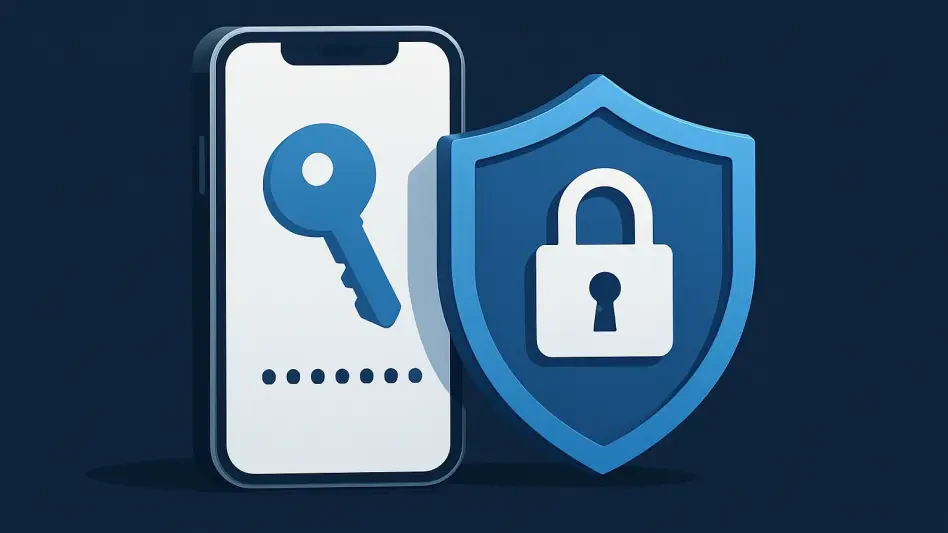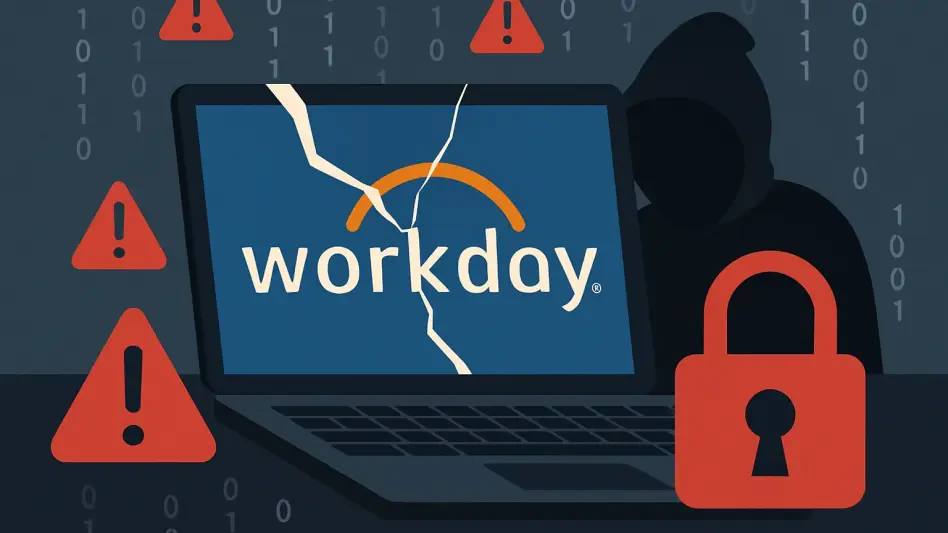In an era where digital interactions dominate daily life, the security of online accounts and sensitive information has become a paramount concern for individuals and organizations alike, prompting a critical reevaluation of traditional methods. Traditional passwords, long considered the bedrock of authentication, are increasingly revealing their shortcomings as cyber threats grow in both frequency and sophistication. Data breaches, phishing scams, and financial losses tied to weak or stolen credentials have exposed the fragility of this outdated method. As attackers leverage advanced tools like artificial intelligence to exploit vulnerabilities, the urgency to adopt a more robust solution has never been clearer. This discussion delves into the transformative potential of device-bound passkeys, a passwordless approach that ties authentication to physical devices, offering a formidable defense against remote attacks. By examining the flaws of passwords, the evolving threat landscape, and the benefits of passkeys for organizations and channel partners, this exploration aims to uncover whether this technology represents the next evolution in secure access.
Unraveling the Weaknesses of Passwords
The foundation of digital security has historically rested on passwords, yet their inherent flaws have made them a significant liability in today’s threat environment. Research indicates that a staggering 81% of hacking incidents are linked to weak or reused passwords, a statistic that underscores their vulnerability. These credentials are often easy to guess or steal, especially through phishing attacks where users are deceived into disclosing their information. Even basic multi-factor authentication (MFA) methods, such as SMS-based codes, frequently fail to provide adequate protection against determined attackers. The fallout from these breaches can be devastating, particularly for industries like healthcare and finance, where sensitive data is at stake. Financial losses, legal repercussions, and reputational damage are just a few of the consequences that highlight the critical need to move beyond this outdated system of authentication to something more resilient.
Compounding the issue is the human element that often undermines password security across both personal and professional settings. Many users, under pressure to remember multiple complex strings, resort to predictable patterns or reuse the same password across different platforms, amplifying the risk of compromise. Even when policies mandate strong passwords, enforcement can be inconsistent, and users may still fall prey to social engineering tactics designed to extract credentials. For organizations, this creates a persistent challenge in balancing usability with security, as overly stringent requirements can frustrate employees and lead to workarounds that further weaken defenses. The reality is that passwords, as a standalone solution, are no longer equipped to handle the sophisticated methods employed by cybercriminals, pushing the industry to seek alternatives that address these systemic weaknesses at their core.
Navigating the Evolving Cyber Threat Landscape
Cyber threats have undergone a dramatic transformation, becoming more sophisticated and accessible due to advancements in artificial intelligence (AI) and other technologies. AI-driven attacks, such as voice cloning combined with caller ID spoofing, have lowered the barrier for cybercriminals, enabling even less-skilled attackers to execute convincing scams. These methods can trick users into revealing sensitive information or granting unauthorized access, often bypassing traditional security measures. For organizations, particularly channel partners managing extensive customer and vendor data, the stakes are incredibly high. A single breach can cascade through interconnected systems, causing widespread disruption and loss of trust. This rapidly changing landscape demands a proactive approach to security that can keep pace with the ingenuity of modern attackers.
Beyond individual attacks, the sheer volume and variety of cyber threats add another layer of complexity to the challenge of securing digital assets. Phishing remains a dominant tactic, but it is now often paired with more advanced strategies like deepfake technology to create highly personalized and believable deceptions. The financial and reputational toll of these incidents is particularly acute for industries that rely on confidentiality and integrity, such as legal services or government agencies. Channel partners, acting as intermediaries between vendors and clients, face amplified risks due to their access to multiple systems and datasets. As threats continue to evolve, clinging to outdated authentication methods is akin to leaving the door unlocked in a high-crime area. The urgency to adopt forward-thinking solutions that can counter these dynamic risks has become a central focus for security experts worldwide.
Exploring the Promise of Device-Bound Passkeys
Amid the growing concerns over password vulnerabilities, device-bound passkeys emerge as a compelling alternative that redefines secure authentication. These passkeys integrate something a user knows, such as a PIN, with something they possess, like a hardware security key or a specific device. Unlike passwords, which can be intercepted or shared, passkeys are stored directly on the device and require physical interaction for authentication. This design renders them nearly impervious to remote attacks like phishing, as attackers cannot access the credential without the physical device. The result is a level of protection that traditional methods simply cannot achieve, offering a user-friendly yet highly secure approach to safeguarding digital access in an increasingly hostile online environment.
The technical advantages of passkeys extend beyond their resistance to common cyber threats, providing a framework that aligns with modern security needs. By tying authentication to a specific device, passkeys eliminate the risk of credential theft through keylogging or other remote hacking techniques. They also reduce the burden on users to remember complex passwords, thereby minimizing the likelihood of insecure practices like writing down credentials or reusing them across accounts. For IT administrators, this technology simplifies the management of access controls, as lost or stolen devices can be remotely disabled without compromising the broader system. As a cornerstone of passwordless authentication, device-bound passkeys represent a shift toward a more robust and sustainable model of security that can adapt to future challenges in the digital realm.
Advantages for Businesses and Channel Partners
For businesses, particularly channel partners tasked with managing sensitive data and systems, adopting device-bound passkeys offers a multitude of strategic benefits. Beyond bolstering cybersecurity, passkeys facilitate compliance with stringent regulations such as PCI DSS 4.0 and NIS2, which mandate robust authentication mechanisms to protect against breaches. By eliminating phishable elements from the user lifecycle, passkeys significantly reduce the risk of phishing incidents, provided that secure processes for account registration and recovery are implemented. This not only safeguards critical information but also enhances trust with clients and vendors who rely on channel partners to maintain the integrity of shared systems. The adoption of such technology positions organizations as leaders in cybersecurity, ready to meet the demands of an ever-evolving regulatory landscape.
Moreover, the operational advantages of passkeys can transform how organizations approach security and user experience. The reduction in password-related support tickets, such as resets or account lockouts, can lead to significant cost savings and improved efficiency for IT departments. For channel partners, who often juggle multiple vendor relationships and client interactions, this streamlined approach minimizes downtime and ensures seamless access to necessary systems. Additionally, the enhanced security provided by passkeys can serve as a competitive differentiator, reassuring stakeholders of the commitment to protecting their data. As cyber threats continue to target vulnerabilities in traditional authentication, embracing passkeys becomes not just a defensive measure but a proactive strategy to build resilience and maintain credibility in high-stakes industries.
Embracing a Passwordless Future Globally
The transition away from passwords is gaining momentum worldwide, with governments and industry leaders championing passwordless technologies like device-bound passkeys as the path forward. A notable example is the UK government’s initiative to integrate passkey technology into public digital services, demonstrating the dual benefits of enhanced security and cost efficiency. This move reflects a broader recognition that traditional authentication methods are unsustainable in the face of modern cyber risks. As more countries and organizations adopt similar strategies, passkeys are set to become a global standard, reshaping how secure access is defined across public and private sectors. This shift underscores the scalability of passkeys as a solution capable of addressing diverse security needs on an international scale.
Further driving this movement is the consensus among security experts that passwordless systems offer a critical defense against the human errors and remote attacks that plague traditional methods. By focusing on hardware-based authentication, passkeys mitigate risks associated with weak credentials or phishing attempts, creating a more secure digital ecosystem. For industries handling sensitive data, such as financial services or government operations, this transition is particularly urgent. Channel partners, positioned at the intersection of multiple stakeholders, stand to benefit immensely from aligning with this global trend. Looking ahead, the widespread adoption of passkeys could pave the way for innovative security practices, ensuring that authentication evolves in tandem with emerging threats and technological advancements.
Reflecting on the Path to Enhanced Security
Looking back, the journey toward stronger digital security revealed the profound limitations of passwords as a protective measure against increasingly cunning cyber threats. Device-bound passkeys stood out as a pivotal innovation, providing a phishing-resistant and user-friendly alternative that addressed the root causes of many breaches. Their ability to tie authentication to physical devices marked a significant departure from the vulnerabilities of traditional methods. Organizations and channel partners who embraced this technology found themselves better equipped to handle the challenges of data protection and regulatory compliance. As the global community rallied around passwordless solutions, the shift became a defining moment in cybersecurity history. Moving forward, the focus should remain on refining implementation strategies, ensuring user education, and developing secure recovery processes to maximize the potential of passkeys in safeguarding the digital landscape.








